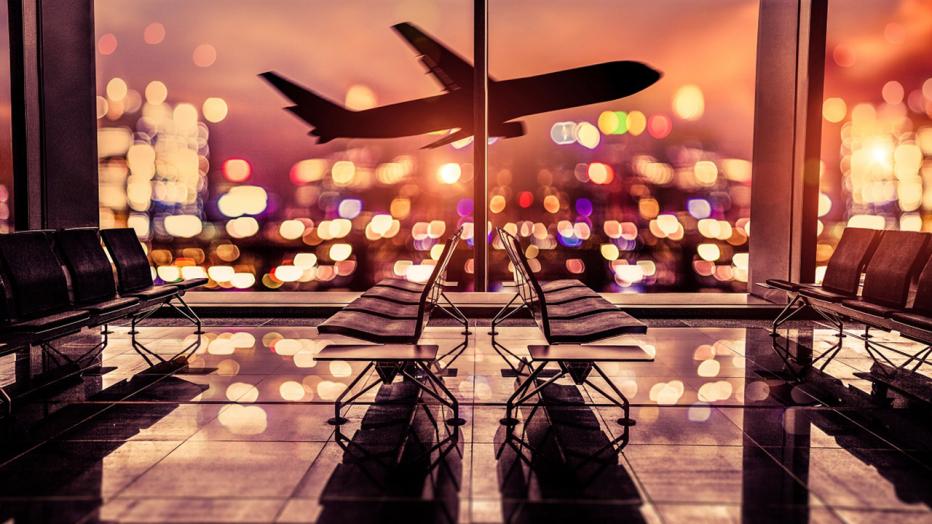
You see it all the time…people get weird at funerals, the Department of Motor Vehicles and the airport. They’re uncomfortable out of their element, testing the limits of their comfort zones. They make bizarre choices, and sometimes leave all sensible manners at the door – there’s an entire Instagram account dedicated to questionable airport and airplane behavior called Passenger Shaming. It’s both hilarious and horrifying.
Personal mannerisms and human quirkiness aside, Jacobs is at the forefront of developing and implementing innovative design solutions within the airport industry aimed at making comfort and accessibility for everyone part of the trend in modern airport design. Our Technical Director, Terminals for Asia Pacific & Middle East, Joseph Butler, was recently featured on Cheddar and expounds on that interview by addressing some of the key components of the future of modern airport design and passenger travel.
TSA on Trend
Automated processes were once a nice to have, now they are imperative. The most successful solutions, such as biometric technology – which use unique physical and behavioral characteristics to identify passengers – are the ones that you hardly notice. What if you didn’t have to pass through or step into a full body scanner, and instead you were scanned by face or fingerprint? It would seem logical that the most obvious improvement for passenger flow would be a more open and free-flowing terminal free of long lines and deep sighs, which, as new technology comes online, would significantly reduce passenger anxiety.
Continuous improvements in technology not only provides increased levels of security, it also extends beyond the terminal by providing a safer environment for both staff and passengers on the tarmac. Some of our clients are looking to trial “smart-stands” where the process of parking the aircraft and docking of the passenger loading bridge is entirely automated – making it safer, less labor intensive and more efficient for airlines. Airport clients we work with use technology for different purposes – some focus more on efficiency and pure passenger throughput, while others focus on becoming a destination of choice by re-imagining the passenger experience. Think shopping mall, water falls, gardens and chef-driven restaurants as part of your terminal-a-go-go experience.
Classism at its Finest
So, you’ve made it through security with your bits and bobbles, time to relax. But do we ever really relax in the airport? Maybe you’re one of those, “I’m gonna’ get there two hours ahead of time” travelers, but if you’re like most people, that’s not real life.
After security, passengers face several choices dependent on their profile. Some are business travelers who don’t want to shop – they want immediate and convenient access to their airline lounge. Premium passengers (ahem, business and first class) prefer direct access to their boarding gate from the airline lounge – they prefer discretion, minimal interaction with other passengers and most importantly, want to avoid lines and inconveniences. If they shop, it will only be at high-end options which are discrete and convenient. Families travelling on holiday want to find somewhere to eat, or have convenient access to bathrooms, and similarly, those travelling in large groups want to find a generous amount of seating where they can sit together.
In contrast, the airlines want most passengers at the gate 30 minutes before boarding begins. Once a passenger arrives in the departure lounge or commercial area, two key considerations are critical: passenger orientation related to where they are in the terminal and where their plane is, and access to flight information displays that tell passengers how long they have before boarding commences. The biggest challenge for airport operators, airlines and designers are to satisfy the diverse needs of their customers within a highly regulated and sometimes stressful environment.
Designing with Purpose
Architects and planners show greater attention to aesthetics and provide more of a “sense of place” when it comes to universal design – which means design for everyone: children, the aged population, mobility impairments, autism spectrum disorder (ASD), etc.
Some of the universal design improvements Jacobs is addressing include minimizing changes in directions and floor levels where possible, making the terminal suitable for all types of mobility-challenged passengers, improving safety and ease of movement. Where a level change is unavoidable, providing high-capacity lifts rather than escalators to ease passenger movement. Improving dynamic signage and wayfinding visibility by addressing the size and brightness used. Some airports are now providing ASD-curated experiences at airports by implementing simple initiatives such as sensory “chill out” spaces and priority queuing for these passengers.
Once a passenger’s anxiety levels are stable, only then will they consider shopping, seek out food and beverage, or simply find a place to relax. The ultimate goal is to treat passengers like guests and provide them with an experience before they board their flight, resulting in a greater chance of holding passengers in the commercial area for longer, where footfall and time spent dwelling directly affect passenger spend rates. And retail therapy is therapy, right? The retail landscape is changing and becoming more digitally focused. Terminals of the future will deliver retail outcomes similar to the showroom floor – passengers will browse and sample, make a decision to purchase goods and have them delivered to their destination or home.
A Jetsons-era Terminal, You Say??
Airports are becoming larger and busier with increased global demand for air travel, which means that longer walking distances need to be overcome with different planning models and technological solutions around passenger mobility – this is both an engineering and a design challenge. Planning and design for the busiest airports will likely evolve to rely more on people mover technology to address these needs, think “magic carpet travellators” and sideways-moving, rope-less elevators – yeah, you heard that right. It’s pretty awesome – click here.
Recent masterplans of the world’s busiest airports show a trend towards separate ground transport interchange (where all types of ground transport and people movers coexist) combined with a mass transit system to remote concourses that are efficiently wrapped with aircraft. Airports will soon be sharing space with autonomous vehicles. Uber Elevate has signed commercial agreements to be operational at Melbourne, Dallas and LAX by 2023, with a commercial agreement in place to potentially use existing car park roofs and helipads. Effects to ground transport models will need to be modified based on changes to ride share and alternative modes of ground transport.
Addressing issues through implementing thoughtful design innovations ultimately reduces passenger anxiety that typically occurs during check-in, security and boarding processes. Airports are evolving into places where people come to hang out, even if they are not travelling – like the recent opening of our Changi Jewel project in Singapore – which represents the next evolution of the airport city where airports become places for locals, rather than purely processing machines for travelers. Changi Airport has won the Skytrax world’s best airport award seven years running, achieved through a strong focus on customer experience and a commitment to continually redefining what an airport can be. The industry has taken notice and is rapidly catching up – the outcomes will only be positive, equating to a better travel experience for all.
With more than 15 years of architecture and planning, aviation experience across North America, Europe and Asia-Pacific, Joseph Butler now serves as Technical Director, Terminals for Asia Pacific & Middle East at Jacobs. From master planning of aviation and urban regeneration areas and design strategies to retail planning and integration and implementation of fast travel/automated systems, he’s committed to elevating the passenger journey/experience at each touchpoint throughout the planning and design of international and domestic airport terminals and their surrounding facilities.














































